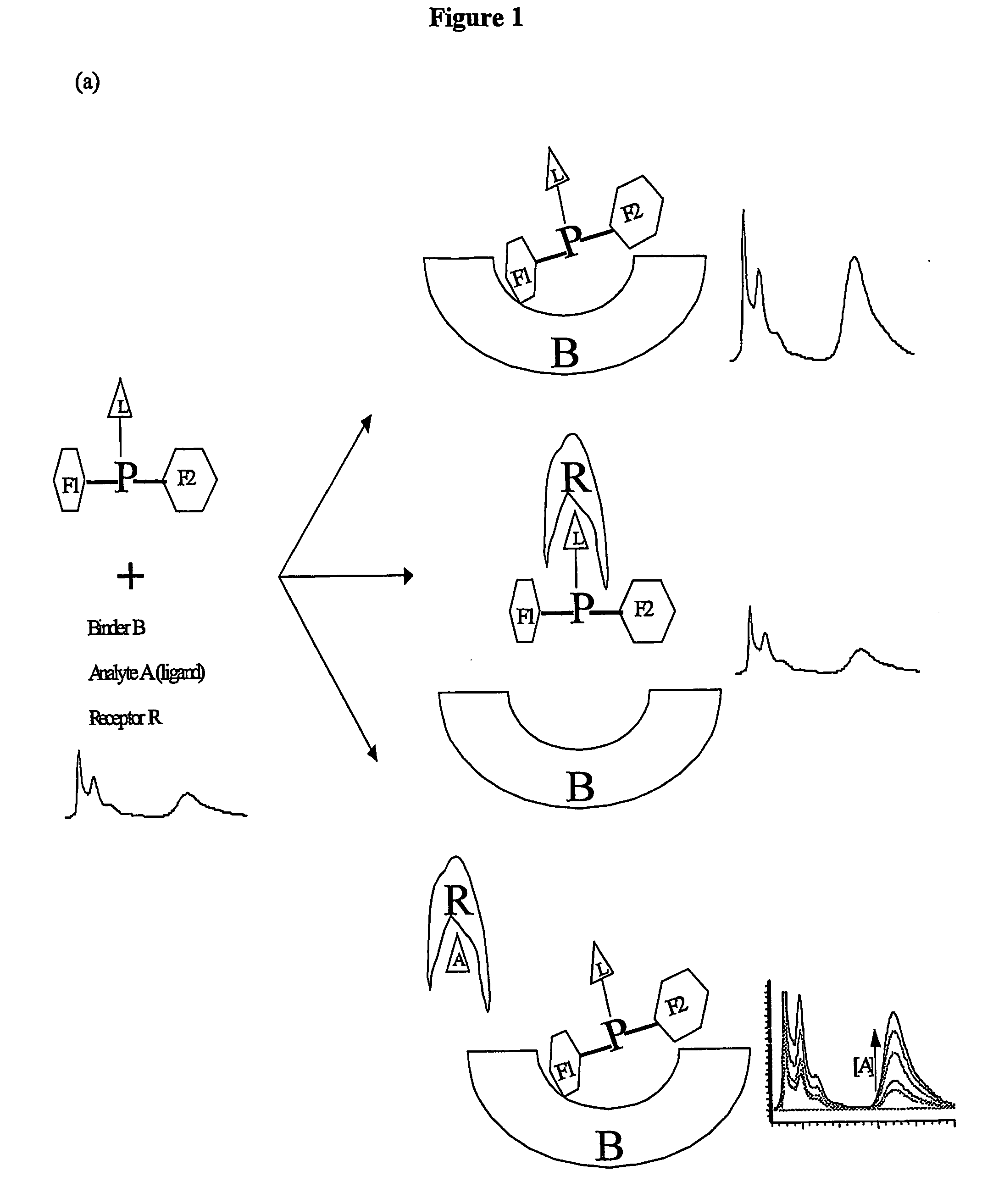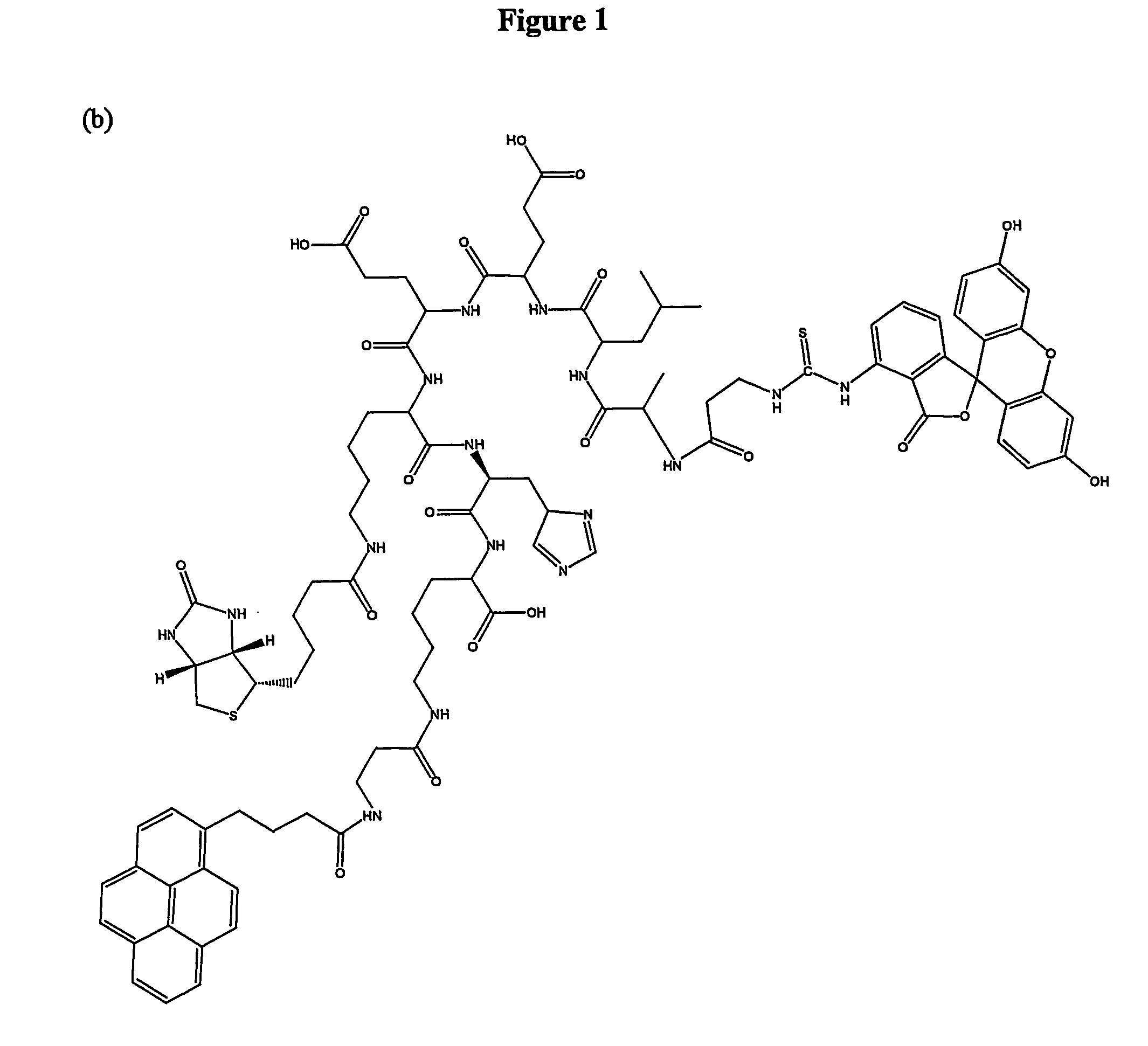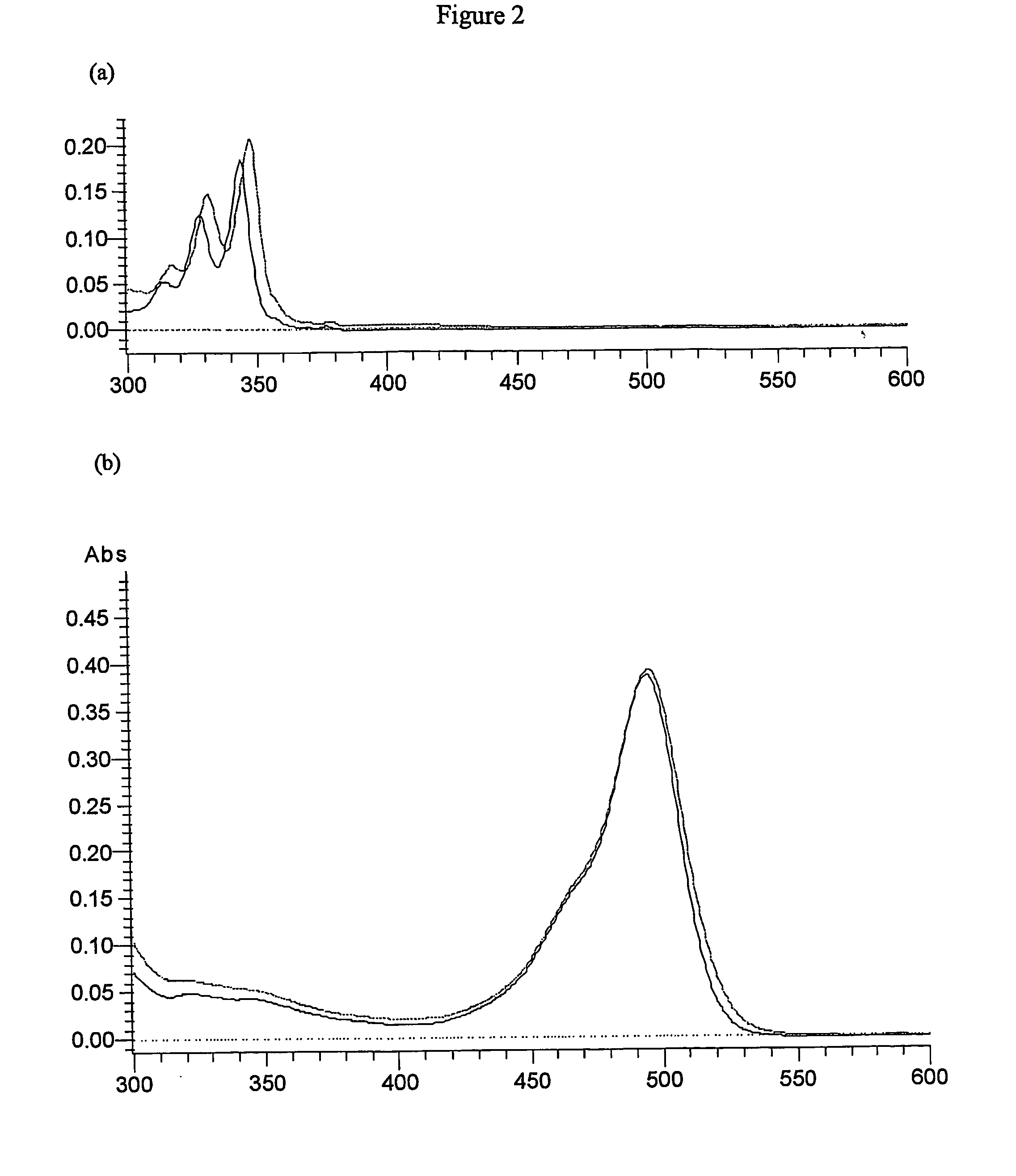Light Emitting Probes
a light-emitting probe and probe technology, applied in the field of fluorescence, can solve the problems of large stokes shift, indirect proportionality of fluorescence signal to analyte concentration, and perturbation of uv/vis absorption, so as to facilitate fluorescence-based detection, signal enhancement or energy transfer is diminished, and the effect of signal enhancement or energy transfer is preferably reduced
- Summary
- Abstract
- Description
- Claims
- Application Information
AI Technical Summary
Benefits of technology
Problems solved by technology
Method used
Image
Examples
example 2
Probes and their Fluorescence Spectroscopic Properties
[0112] Fluorescence measurements were made on a Hitachi F-2500 fluorescence spectrophotometer with a 1 cm path length cuvette. Spectra were measured at a rate of 1500 nm / min. Excitation wavelength of 345 nm was used for pyrene and 490 nm for FITC.
[0113] The machine sensitivity was set at 700 v or 400 v depending on the concentration and fluorescence intensity of the sample. Absorption spectra were recorded on Hitachi U2010 spectrophotometer. Lifetimes were measured on modified IBH machine.
[0114] Given below are structures of linkers (here peptide is used as linker) and F1-P-F2 and conjugates F1-P (L)-F2. Three-letter code is used for amino acids. F1 is fluorophore 1 for instance pyrenebutanoyl pyr), F2 is fluorophore 2 for instance fluorescein isothiocynate (FITC). L is ligand or hapten for instance biotin. L can be linked to any part of the F1-P-F2 including the F1 and F2. For Lys(βAla), the carboxyl of βAla is linked to epsi...
example 3
Screening for Suitable Binders B
[0124] A binder is any compound that interacts with the composition so that fluorescence emission of acceptor is enhanced when the donor is excited. This includes solvents of different dielectric constant. The binder's function could be to merely interact with compositions to enhance their fluorescence. Also the binder function may be to provide local environment of different dielectric constant to shield the compositions from bulk solution. For instance binder can be a protein capable of binding to any part of the F1-P-F2 or its conjugate with other molecules. The binder can be specifically prepared for instance by raising antibody against part of the molecules such as one of the fluorescent dye or its analogues conjugated to carrier protein. Latter analogues may include more than one composition linked together or compositions conjugated to other compounds or particles. Antibodies could be produced by standard practice of conjugating molecules for ...
example 4
Spectroscopic Properties and Signal Enhancement with Binder
[0126] Test Probe 1 shows an intense increase in the FITC signal (λmax emission around 520 nm) when antipyrene antiserum antibody is present (FIG. 9). The excitation wavelength was 345 nm. Emission spectra representing fluorescence intensity against wavelength are displayed in FIG. 9 for 2 ml of 5 μM test probe1 in PBS (phosphate buffered saline pH 7.4) treated with 80 μl of anti-pyrene antibody (1:10 dilution of antiserum). Similar experiments to above but with control probe 1 lacking F1 (no pyrene attached) showed no appreciable change in emission of FITC in the presence of binder indicating F1 is required for efficient energy transfer. This is shown in FIG. 10. In this example a 2 ml of 6 μM control probe 1 in PBS is treated with 80 μl of anti-pyrene antibody (1:10 dilution of antiserum). Excitation wavelength was 345 nm. Emission spectrum representing fluorescence intensity against wavelength is displayed. The fluoresce...
PUM
| Property | Measurement | Unit |
|---|---|---|
| excitation wavelength | aaaaa | aaaaa |
| excitation wavelength | aaaaa | aaaaa |
| path length | aaaaa | aaaaa |
Abstract
Description
Claims
Application Information
 Login to view more
Login to view more - R&D Engineer
- R&D Manager
- IP Professional
- Industry Leading Data Capabilities
- Powerful AI technology
- Patent DNA Extraction
Browse by: Latest US Patents, China's latest patents, Technical Efficacy Thesaurus, Application Domain, Technology Topic.
© 2024 PatSnap. All rights reserved.Legal|Privacy policy|Modern Slavery Act Transparency Statement|Sitemap



